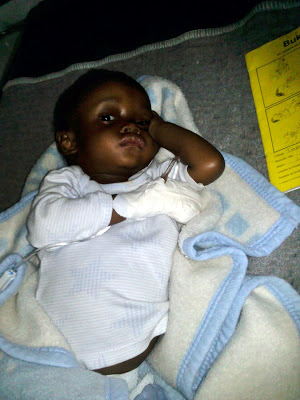A guest post from one of TTL’s current volunteers, Kat Stott…
————
In a previous post, Julie described the immense challenges faced by the people of Lesotho in terms of the scale of this devastating HIV epidemic, compounded by alarmingly low numbers of healthcare professionals per population and often seemingly impossible access to care.
I thought I’d add a bit of detail about the reality of the conditions at Mokhotlong District Hospital for patients and staff, and the commendable way in which that reality is addressed in order to provide the best possible care for residents of the district, including the children at TTL.
I’m a doctor from the UK and am really grateful to TTL for the opportunity to volunteer with them for a while here in Mokhotlong. I’ve been dividing my time between TTL and the hospital, both of which experiences have been eye-opening and educational.
The hospital is staffed by five doctors from the Democratic Republic of Congo. It provides medical care for anyone who makes it to the front door – be their needs medical, surgical, obstetric, pediatric, psychological or traumatic. The outpatient department is a small building, housing four consultation rooms and a waiting room full of patients that overflow onto the driveway from around 8am each day, until everyone has been seen. The inpatient wards are basic but provide safety and relative comfort during patients’ stay. There are two operating rooms, and one room that constitutes the emergency room – this is sufficient because most emergency cases are unable to make it to the hospital to seek urgent care. The doctors work a rotational on-call system, which entails taking turns to be the emergency doctor for all hospital departments including the labour ward, operating rooms and casualty, for seven days in a row, 24 hours per day. This makes my work schedule from the UK seem like a breeze – I work a maximum of four nights on-call in a row, sleep during the day after each shift, and am only on-call for one department or specialty at any one time.
Even basic resources at the hospital are scarce, with no hot running water, overused bedclothes often with large holes in them, and staff shortages across all professions. This week has been a particularly difficult one, with the xray machine- the only imaging modality in the hospital- out of order, and two very commonly required medications now out of stock in the entire country.
The nature of illness encountered here is very different to that which I have seen in the UK, mainly in terms of the burden of HIV and TB, and also the late stage at which patients present to services. This is due to a number of factors, some of which are mentioned above; in addition there is generally a relatively limited level of health awareness, reluctance to seek care due to financial implications in terms of direct cost of services and opportunity costs, and often cultural barriers to health-seeking behavior.
Despite these challenges, the hospital staff work without complaint to provide the best service they can for the many patients in need. Emphasis is placed not only on the management of illness in its acute phase, but also on health education and follow-up to ensure clinical improvement. For the children here at TTL, the hospital offers a safety net and a vital role in their treatment and development. I hope the admirable attitude of the doctors, nurses and other staff there is maintained and that the relationship between the hospital and TTL continues to strengthen, to promote the best possible care for Mokhotlong’s vulnerable children for years to come.
-Kat
-Kat
 |
| The Mokhotlong Government Hospital |
 |
| Construction at the hospital in the TB ward |
 |
| One of TTL’s babies, Tsepang, admitted at hospital for a high fever |
 |
| Tsepang back in the safe-home and on the road to recovery |
The TTLF Fellow is a representative of the North American organisation The Tiny Lives Foundation. Based for one year in Mokhotlong, Lesotho, the TTLF Fellow serves in an administrative support capacity for the Basotho charity TTL.


0 Comments